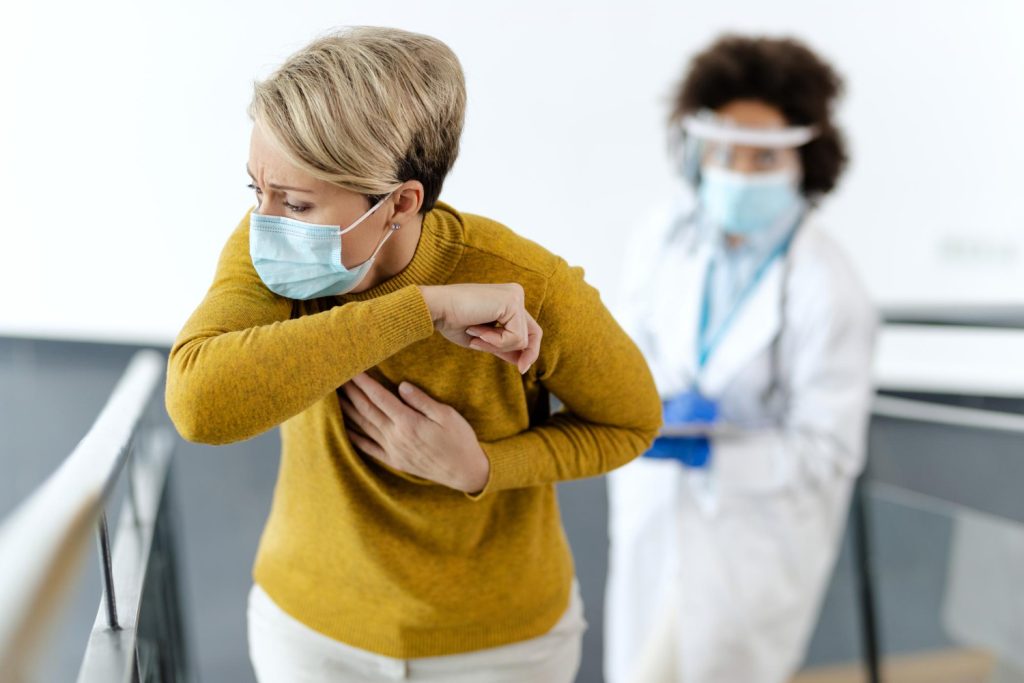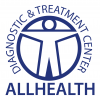Which Clinical Manifestations Are Associated with Tuberculosis?
Identifying which clinical manifestations are associated with a diagnosis of tuberculosis can be more complex than it seems. Some symptoms reveal themselves early, while others remain deceptively silent until the disease has progressed. But which signs truly matter—and which ones are most often overlooked? This article uncovers the clues clinicians rely on to detect TB before it’s too late.
Visit our diagnosis clinic for accurate tuberculosis testing.
TL;DR:
Tuberculosis can be difficult to identify because latent infection has no symptoms, while active disease presents with prolonged cough, systemic symptoms, and sometimes chest pain or blood-tinged sputum. Respiratory and extrapulmonary signs vary widely, requiring careful evaluation and microbiologic confirmation. Diagnosis relies on combining screening tests, imaging, and laboratory methods. During treatment, symptom improvement, sputum conversion, and monitoring for side effects help assess response and detect possible treatment failure.

What Symptoms Are Key Indicators of Tuberculosis Infection?
Tuberculosis can present in different ways depending on whether the infection is latent or active. Latent TB infection produces no symptoms at all, which means it cannot be identified through clinical signs alone. In these cases, screening tests are essential for detection.
When TB becomes active, nevertheless, certain symptoms should immediately raise concern. A cough lasting several weeks is one of the most common early indicators. This may be accompanied by unexplained weight loss, persistent low-grade fever, night sweats, fatigue, and decreased appetite. These systemic symptoms often develop gradually, making them easy to overlook until they become more pronounced.
In situations where the lungs are involved, additional signs may appear. Individuals may experience chest pain or even hemoptysis (coughing up blood), both of which signal more advanced pulmonary involvement.
If someone presents with a prolonged cough combined with weight loss, fever, or night sweats, a timely clinical evaluation is recommended. These symptoms together strongly suggest the need for further testing to assess the possibility of active TB.
Evaluating the Most Common Respiratory Signs of Tuberculosis
When tuberculosis affects the lungs, respiratory symptoms often provide the earliest and most noticeable clues. These signs help guide when further testing is needed, especially since other respiratory illnesses can appear similar.
Main Respiratory Indicators of Pulmonary TB:
- Persistent productive cough lasting more than 2–3 weeks
- Sputum production that may be blood-streaked or frankly bloody (hemoptysis)
- Chest pain, particularly pleuritic pain that worsens with breathing or coughing
- Progressive shortness of breath when disease becomes extensive
- Abnormal chest X-ray findings, such as patchy or nodular infiltrates or upper-lobe cavitation
- Positive sputum tests, including acid-fast bacilli on smear or molecular testing
- Systemic symptoms (such as fever and weight loss) appearing alongside respiratory signs, increasing suspicion for TB
- Need for microbiologic confirmation, since other infections like bacterial or fungal disease can look similar
Detecting Extrapulmonary Symptoms in Advanced Infections
When tuberculosis extends beyond the lungs, it can produce a wide range of symptoms that vary depending on the affected organ. These signs are often subtle or slow to develop, which can delay recognition.
Common Extrapulmonary Indicators:
- Lymphatic TB: Painless swelling of lymph nodes, often in the cervical region
- Pleural TB: Unilateral pleural effusion accompanied by chest pain and breathlessness
- Skeletal TB: Localized bone or joint pain; spinal involvement (Pott disease) may lead to back pain and, in advanced stages, neurological deficits
- Genitourinary TB: Urinary symptoms, sterile pyuria, or blood in the urine
- Central Nervous System TB: Chronic headache, focal neurologic signs, or a meningitis-like presentation with fever, neck stiffness, and altered mental status
- Abdominal TB: Abdominal pain, ascites, or symptoms resembling intestinal obstruction
Because extrapulmonary TB often produces non-specific or subacute symptoms, diagnosis can be challenging. Sputum tests may be less helpful, making targeted sampling necessary. Specialized testing, including molecular methods, culture, and histopathology, is often required for confirmation.
Clinicians should consider extrapulmonary TB when organ-specific symptoms persist, particularly in individuals with known exposure or risk factors such as immunosuppression.
Interpreting Diagnostic Tests for Tuberculosis
Diagnosing tuberculosis requires combining clinical findings with a range of testing methods. Each tool offers different information, and comprehending how they fit together is essential for distinguishing latent infection from active disease.
Screening Tests for Infection (Not Active Disease):
- Tuberculin skin test (TST) and interferon-gamma release assays (IGRAs) detect immune sensitization to TB antigens.
- These tests identify latent infection, but cannot distinguish latent infection from active disease.
- Their performance varies depending on factors such as prior vaccination, immunosuppression, and local epidemiology.
Microbiologic Confirmation (Gold Standard for Active TB):
- Sputum smear microscopy: Provides rapid results but has lower sensitivity, requiring high numbers of organisms to be positive.
- Sputum culture: More sensitive and confirms the presence of live bacteria; also allows for drug-susceptibility testing, though results can take weeks.
- Molecular tests (nucleic acid amplification, including PCR-based methods): Offer faster detection and can identify certain resistance markers. Newer molecular and biomarker approaches continue to improve sensitivity and turnaround times.
Imaging and Targeted Sampling:
- Chest X-ray is a useful early tool but is not diagnostic on its own.
- CT or PET-CT may assist in complex evaluations.
- For extrapulmonary disease, ultrasound, MRI, or organ-specific imaging help identify affected areas and guide sampling.
- Tissue biopsy and histopathology remain essential for confirming many forms of extrapulmonary TB.
Monitoring Symptoms During Tuberculosis Treatment
Monitoring during tuberculosis treatment helps confirm that therapy is working, identify complications, and recognize early signs of treatment failure. Within the first few weeks of effective therapy, many people experience reduced cough, improved appetite, weight gain, fewer fevers and night sweats, and better energy. When these improvements do not occur or symptoms worsen, it is important to reassess adherence, review drug-susceptibility information, and consider other diagnoses or complications.
Microbiologic follow-up plays an essential role, particularly in pulmonary TB. Repeat sputum smear and culture at defined intervals help document conversion to negative results, which is associated with a lower risk of relapse. For extrapulmonary TB, monitoring relies more heavily on clinical progress, imaging, and targeted sampling when needed.
Safety is also an essential part of follow-up because TB medications can cause hepatotoxicity, rash, neuropathy, and other adverse effects. Regular clinical review and selective laboratory testing, including liver function tests and assessments for neuropathy, support safe and effective treatment.
Treatment failure or drug resistance may be suspected when symptoms persist, cultures remain positive despite adherence, or imaging shows new progression. In such cases, drug-susceptibility testing, adherence review, and specialized consultation may be warranted. Public health programs often require reporting and can provide additional support, including directly observed therapy.
Key Takeaways
- Active vs. Latent TB Symptoms
Latent TB produces no symptoms and requires screening tests for detection. Active TB commonly presents with a prolonged cough, weight loss, fever, night sweats, and fatigue. - Primary Respiratory Indicators of TB
Persistent productive cough, bloody sputum, pleuritic chest pain, and shortness of breath are major respiratory signs. Abnormal chest X-rays and positive sputum tests further raise suspicion. - Extrapulmonary TB Presentations
TB outside the lungs causes organ-specific symptoms such as lymph node swelling, pleural effusion, bone pain, urinary changes, neurological signs, or abdominal discomfort. These symptoms are often subtle, requiring targeted sampling and specialized testing for diagnosis. - Role of Diagnostic Testing
Screening tests detect infection but cannot distinguish active disease. Microbiologic methods are the gold standard for confirmation. Imaging and biopsies support diagnosis, particularly in extrapulmonary cases. - Monitoring During TB Treatment
Improvement is expected within weeks, including reduced cough and better appetite and energy. Persistent symptoms or positive cultures may signal treatment failure or resistance.
FAQs:
Which clinical manifestation is most indicative of tuberculosis?
A prolonged cough lasting several weeks, especially when combined with weight loss, fever, or night sweats, is the most indicative clinical sign of active TB.
What is the 4 symptom complex of TB?
A commonly recognized symptom cluster includes prolonged cough, weight loss, persistent fever, and night sweats.
How to clinically diagnose tuberculosis?
Clinical diagnosis relies on identifying compatible symptoms, supporting imaging findings, and confirming infection through microbiologic or molecular testing such as sputum smear, culture, or rapid molecular assays.
What are the three most common symptoms of TB?
The three most common symptoms are a persistent cough, unexplained weight loss, and low-grade fever or night sweats.
Sources.
Wilmink, J., Vollenberg, R., Olaru, I. D., Fischer, J., Trebicka, J., & Tepasse, P.-R. (2025). Diagnostic Challenges in Extrapulmonary Tuberculosis: A Single-Center Experience in a High-Resource Setting at a German Tertiary Care Center. Infectious Disease Reports, 17(3), 39. https://doi.org/10.3390/idr17030039
Peng, L., Ma, W., Zhong, L., Yang, J., Wu, H., Zhu, L., Huang, X., Yang, R., Li, B., Ma, W., Wu, X., Song, J., Luo, S., Bao, F., & Liu, A. (2024). Diagnostic Accuracy of Mycobacterium tuberculosis Antigen-Based Skin Tests (TBSTs) for Tuberculosis Infection Compared with TST and IGRA: A Network Meta-Analysis. Pathogens, 13(12), 1050. https://doi.org/10.3390/pathogens13121050
Gopalaswamy, R., Dusthackeer, V. N. A., Kannayan, S., & Subbian, S. (2021). Extrapulmonary Tuberculosis—An Update on the Diagnosis, Treatment and Drug Resistance. Journal of Respiration, 1(2), 141-164. https://doi.org/10.3390/jor1020015
